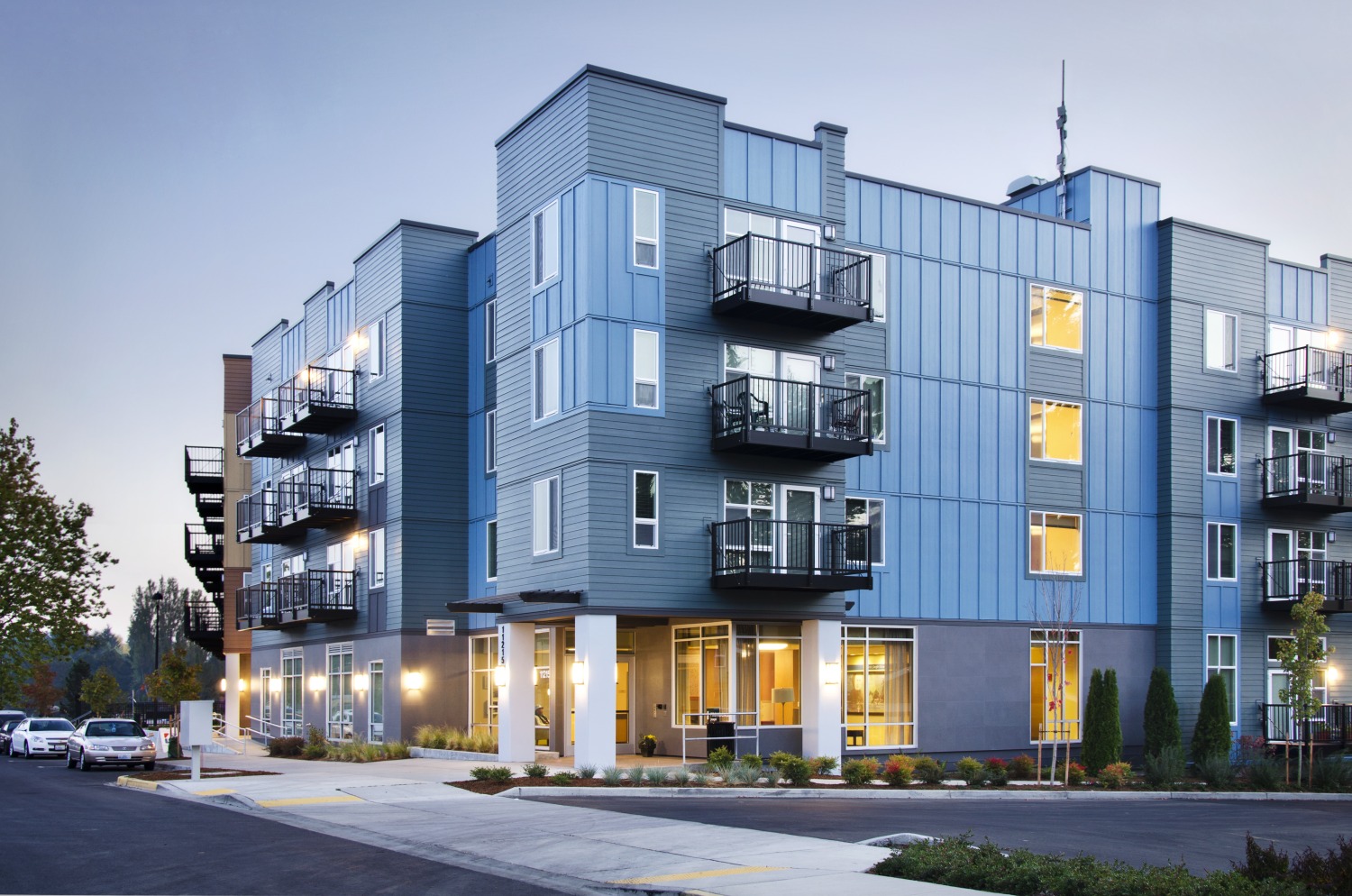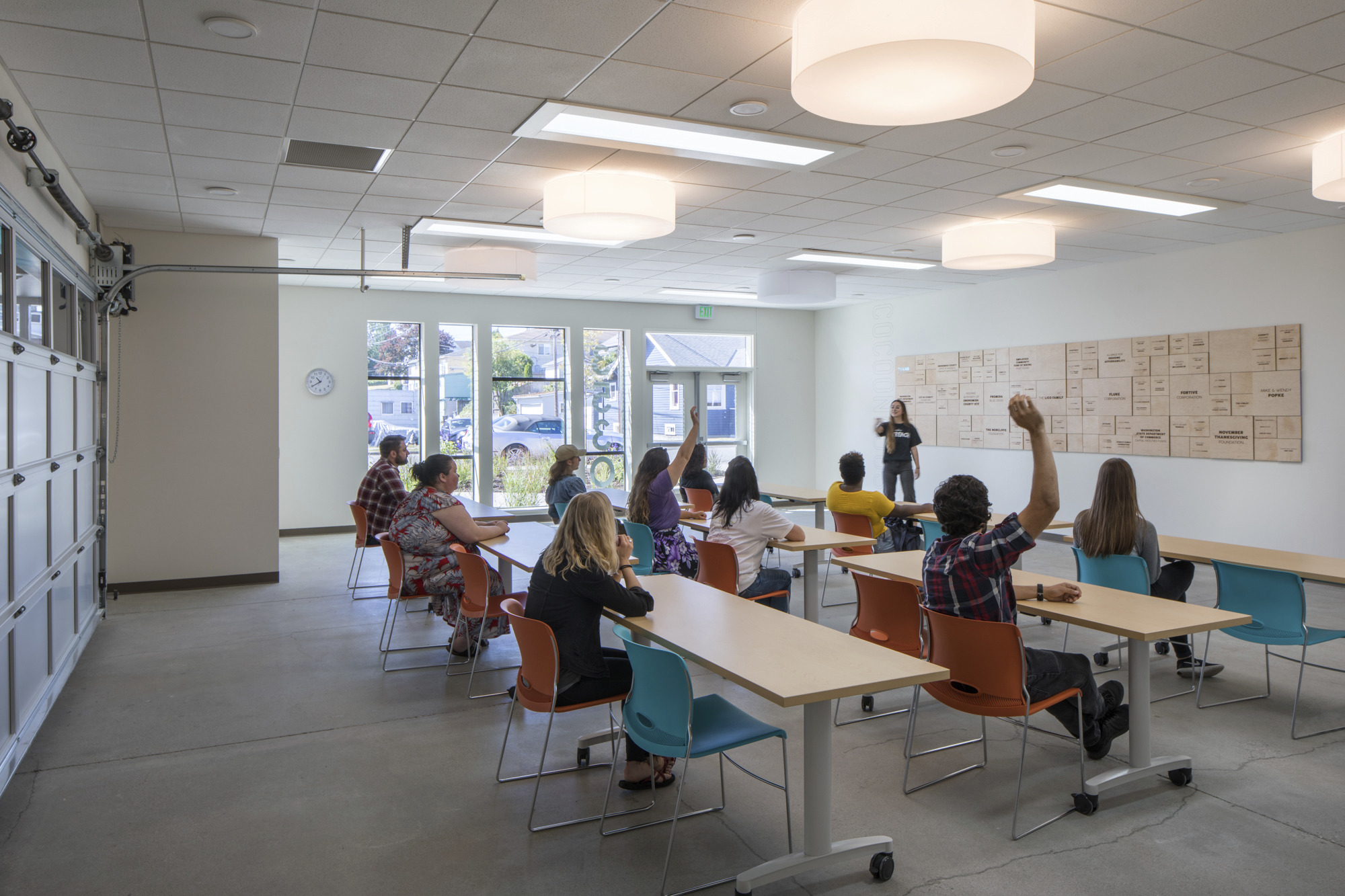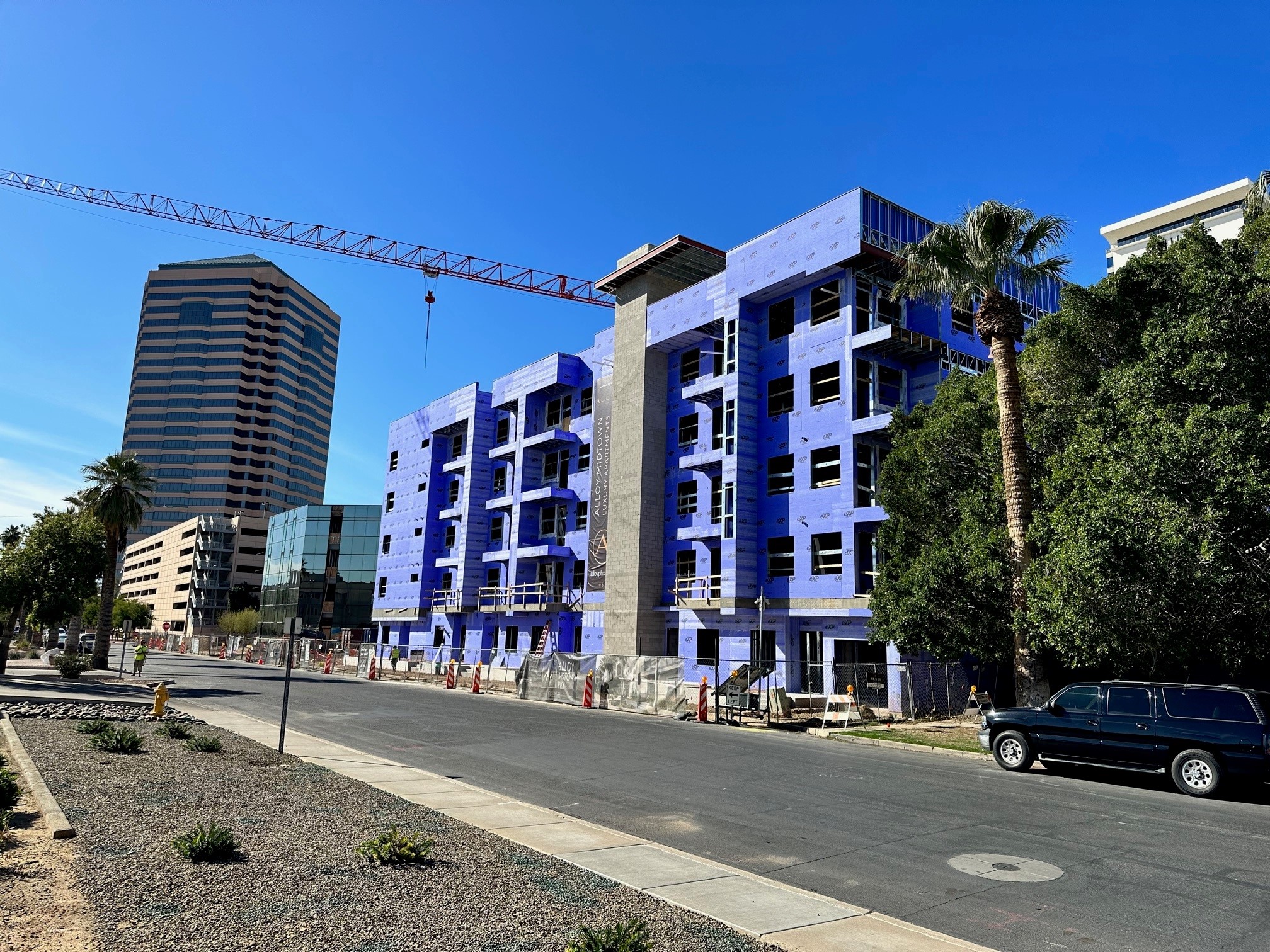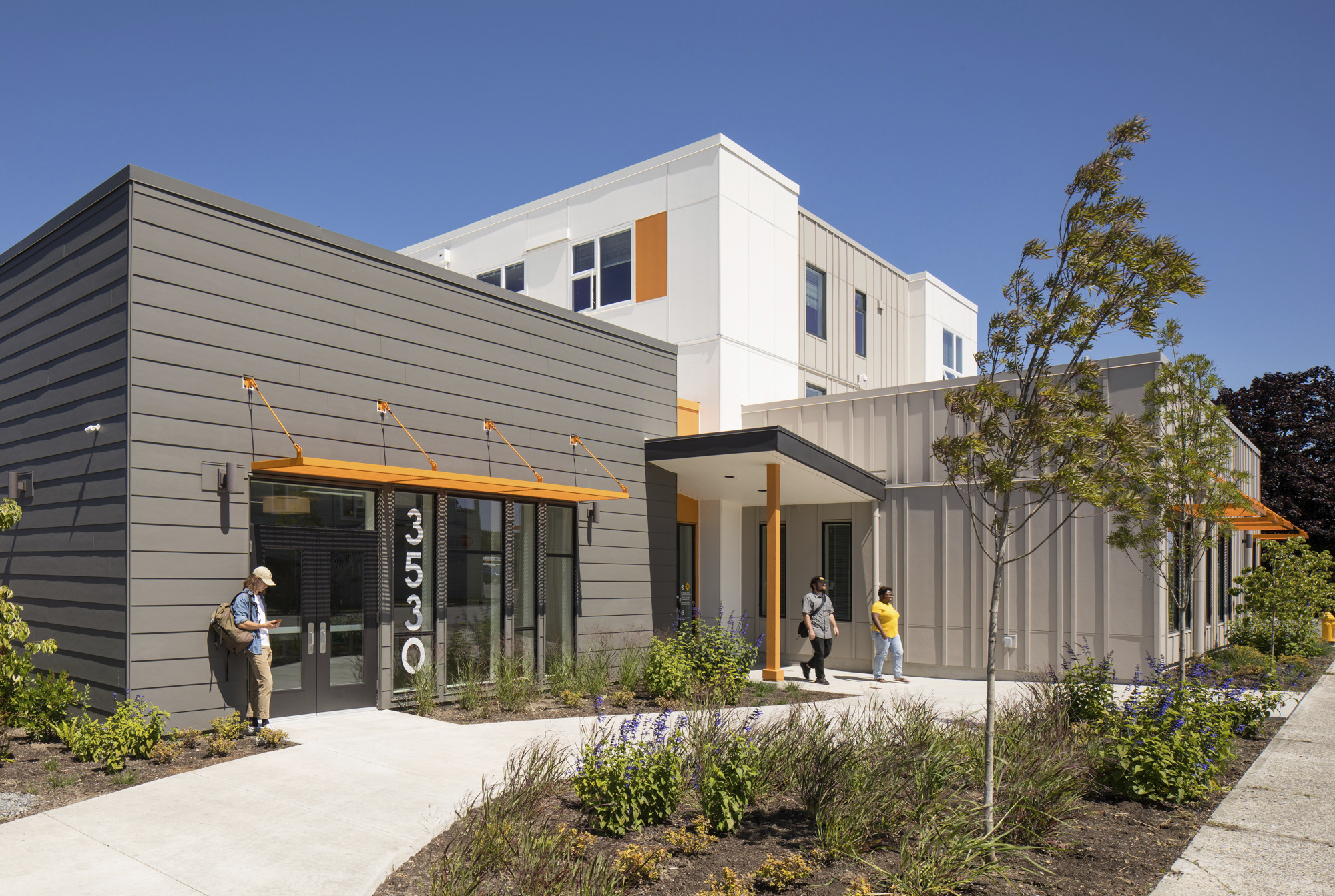Recently, while commuting past a tent community on my way to work, I was reminded that a medium- to large-sized city in the U.S. today without a homelessness problem is a rarity. In my home city of Seattle, for example, we need tens of thousands of new affordable units per year to keep up with population growth, which city officials expect to hit one million people by 2044.
As an architect who has focused on designing affordable housing developments in Seattle, Los Angeles, and Boise for more than 25 years, I know firsthand achieving these projects is complicated and requires the combined resources of developers, contractors, architects, engineers, and judicial plan reviewers, as well as a range of public and private funding sources. It also takes a huge amount of collective will.
In the face of this challenge, there is one simple but extremely powerful way to address the “problem” of affordable housing. We can change the language we use to describe housing and actively shift it to be more inclusive. The descriptor “essential housing” allows for that framework. While “affordable housing” often conjures associations with government handouts and helping those who cannot, for whatever reason, help themselves, the reality is there are huge swaths of our population for whom housing costs are prohibitive. They are our teachers, baristas, firefighters, nurses, and many other essential workers. For many in our communities, rising rents and increased demand for housing means they are only one paycheck away from being unhoused.
It’s time to stop thinking of affordable housing as a handout which is someone else’s problem to solve and start calling it what it is: Essential Housing, a crucial component of a thriving local community.

Essential housing is a collective endeavor
When we reframe housing as something essential to communities, many more possible solutions come to light. There are numerous connections between stable housing and other elements of community life such as wellness, faith, and public safety, and looking at housing through these lenses reveals new opportunities to tackle the issue.
Framing Essential Housing through the lens of healthcare reveals the link between stable housing and healthy community members. Anyone living unhoused, or in substandard living conditions, is at a greater risk for negative health impacts, and many mental health issues can only be solved after obtaining permanent housing. Understanding housing as essential to a healthy community means there are opportunities to direct medical investments toward the endemic housing shortage. At GGLO, our design for Providence Joseph House in south Seattle is a successful example of how healthcare companies—in this case, Washington-based Providence Health & Services—can direct resources towards bolstering the housing supply.
Looking at Essential Housing through a faith-based framework, we see the connection between stable housing and the necessary support services often offered by religious or mission-based entities. There are many examples of churches, synagogues, and temples using their available space to build much needed housing developments, including GGLO’s recently completed Cocoon House. This development provides 40 units of housing alongside support services for at-risk youth in Snohomish County, Wash., on the site of a former church.

Understanding housing as an essential aspect of ensuring public safety asks us to treat the issue with more urgency. We hear proclamations of local, regional, and statewide housing emergencies year after year, yet we see the challenge continue to grow with little resistance. If we can act with a similar haste to public health emergencies like the COVID-19 pandemic, or to a flood, fire, or earthquake, we can make a meaningful impact.
Design solutions
Although the housing challenge is massive and impacts all aspects of community life, there is not a one-size-fits-all approach to solving it. The strategies must be as varied as the stories of those facing a lack of housing. It is truly not possible to create enough housing through traditional means; reframing the issue as essential can help drive a new sense of urgency and an all-hands approach to developing new solutions.
We are seeing great strides in modular and manufactured housing to speed up the production of this essential resource. Whether a full living unit, or a kit of parts that can be componentized and rapidly assembled, these strategies can rapidly create new shelter. Individual Tiny Homes provides rapid shelter, and multi-story buildings built from factory components can provide permanent stable homes on an expedited timeline.
Rezoning and densifying land for housing is rapidly occurring in cities like Seattle, Boise, and beyond. Former malls and retail centers are being adapted to housing, including Seattle’s Northgate Mall and Lynnwood’s Alderwood Mall, which GGLO is working to convert to transit-oriented redevelopments by creating new housing to complement existing retail infrastructure.
Converting existing vacant office buildings into residential is also seeing an increased opportunity, as evidenced by GGLO’s current Alloy at Midtown project in Phoenix, Ariz. This development takes advantage of the existing infrastructure to create housing at greater speed than new construction. We must match increasingly vacant office space to the huge housing needs across our communities.

Always, we must remember the importance of an inclusive and community-centered process where integrated teams of designers, builders, operators, and users come together to plan buildings that address the unique needs of the communities where they are situated. Essential Housing requires new advocacy and creativity around the design and development process. Encouraging innovation and speed in permitting and jurisdictional processes, while still maintaining public health and safety, is imperative.
While much of this can feel overwhelming, it is possible if we come together as communities to address these pressing housing challenges. Changing the narrative to reframe housing as essential is a first step. Through the power of language, we can tap into our collective willpower and, hopefully, pool our energy and resources to build a better future.
Related Stories
Multifamily Housing | Jun 15, 2023
Alliance of Pittsburgh building owners slashes carbon emissions by 45%
The Pittsburgh 2030 District, an alliance of property owners in the Pittsburgh area, says that it has reduced carbon emissions by 44.8% below baseline. Begun in 2012 under the guidance of the Green Building Alliance (GBA), the Pittsburgh 2030 District encompasses more than 86 million sf of space within 556 buildings.
Industry Research | Jun 15, 2023
Exurbs and emerging suburbs having fastest population growth, says Cushman & Wakefield
Recently released county and metro-level population growth data by the U.S. Census Bureau shows that the fastest growing areas are found in exurbs and emerging suburbs.
Mixed-Use | Jun 6, 2023
Public-private partnerships crucial to central business district revitalization
Central Business Districts are under pressure to keep themselves relevant as they face competition from new, vibrant mixed-use neighborhoods emerging across the world’s largest cities.
Multifamily Housing | Jun 6, 2023
Minnesota expected to adopt building code that would cut energy use by 80%
Minnesota Gov. Tim Walz is expected to soon sign a bill that would change the state’s commercial building code so that new structures would use 80% less energy when compared to a 2004 baseline standard. The legislation aims for full implementation of the new code by 2036.
Multifamily Housing | Jun 1, 2023
Income-based electric bills spark debate on whether they would harm or hurt EV and heat pump adoption
Starting in 2024, the electric bills of most Californians could be based not only on how much power they use, but also on how much money they make. Those who have higher incomes would pay more; those with lower incomes would see their electric bills decline - a concept known as income-based electric bills.
Multifamily Housing | May 30, 2023
Boston’s new stretch code requires new multifamily structures to meet Passive House building requirements
Phius certifications are expected to become more common as states and cities boost green building standards. The City of Boston recently adopted Massachusetts’s so-called opt-in building code, a set of sustainability standards that goes beyond the standard state code.
Multifamily Housing | May 23, 2023
One out of three office buildings in largest U.S. cities are suitable for residential conversion
Roughly one in three office buildings in the largest U.S. cities are well suited to be converted to multifamily residential properties, according to a study by global real estate firm Avison Young. Some 6,206 buildings across 10 U.S. cities present viable opportunities for conversion to residential use.
Multifamily Housing | May 19, 2023
Biden administration beefs up energy efficiency standards on new federally funded housing
The Biden Administration recently moved to require more stringent energy efficiency standards on federally funded housing projects. Developers building homes with taxpayer funds will have to construct to the International Energy Conservation Code (IECC) 2021 for low-density housing and American Society of Heating, Refrigerating and Air-Conditioning Engineers ASHRAE 90.1 for multi-family projects.
Affordable Housing | May 17, 2023
Affordable housing advocates push for community-owned homes over investment properties
Panelists participating in a recent webinar hosted by the Urban Institute discussed various actions that could help alleviate the nation’s affordable housing crisis. Among the possible remedies: inclusionary zoning policies, various reforms to increase local affordable housing stock, and fees on new development to offset the impact on public infrastructure.
Multifamily Housing | May 16, 2023
Legislators aim to make office-to-housing conversions easier
Lawmakers around the country are looking for ways to spur conversions of office space to residential use.cSuch projects come with challenges such as inadequate plumbing, not enough exterior-facing windows, and footprints that don’t easily lend themselves to residential use. These conditions raise the cost for developers.


















